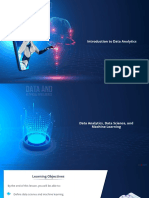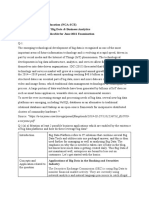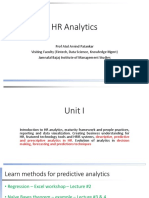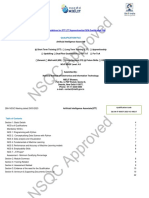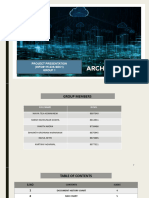0% found this document useful (0 votes)
41 views18 pagesDS3 Data Science Introduction
This document provides an overview of practical data science using Python. It discusses what data science is, common use cases, the data science process, sources of data, tools and technologies used, and the scope of study in the course. Data science is an interdisciplinary field that uses scientific methods and algorithms to extract knowledge and insights from structured and unstructured data. It has various use cases across industries like banking, e-commerce, healthcare, and manufacturing. The data science process involves problem definition, data acquisition, analysis, modeling, and deploying models. Programming languages like Python and R are commonly used along with machine learning libraries and visualization tools.
Uploaded by
vikasCopyright
© © All Rights Reserved
We take content rights seriously. If you suspect this is your content, claim it here.
Available Formats
Download as PDF, TXT or read online on Scribd
0% found this document useful (0 votes)
41 views18 pagesDS3 Data Science Introduction
This document provides an overview of practical data science using Python. It discusses what data science is, common use cases, the data science process, sources of data, tools and technologies used, and the scope of study in the course. Data science is an interdisciplinary field that uses scientific methods and algorithms to extract knowledge and insights from structured and unstructured data. It has various use cases across industries like banking, e-commerce, healthcare, and manufacturing. The data science process involves problem definition, data acquisition, analysis, modeling, and deploying models. Programming languages like Python and R are commonly used along with machine learning libraries and visualization tools.
Uploaded by
vikasCopyright
© © All Rights Reserved
We take content rights seriously. If you suspect this is your content, claim it here.
Available Formats
Download as PDF, TXT or read online on Scribd
/ 18





